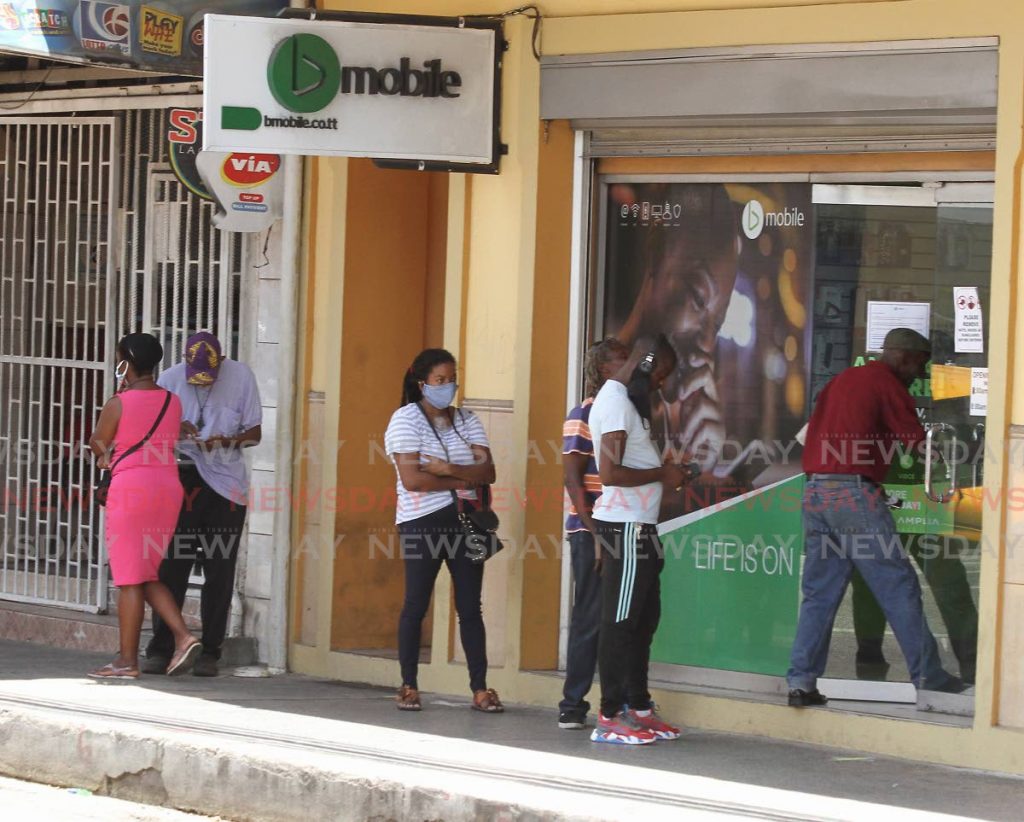TSTT CEO shares insight on broadband expansion to internet security

On May 27, technology writer Mark Lyndersay posed questions to newly appointed TSTT CEO Lisa Agard. The company responded on Tuesday this week.
You are back and in as CEO at TSTT: what is that like after all these years?
A lot has happened in the telecoms industry since I left TSTT in 2012. I was involved in an adjacent industry (broadcasting) for a year and a half and jumped right back into telecoms with my involvement in Massy Communications.
At that time, Massy made a significant investment in a fibre-to-the-home project to serve residential customers in Trinidad. Massy and TSTT began to co-operate in some areas, and this led ultimately to TSTT acquiring Massy Communications in 2017.
What were your priorities when you were asked to act as CEO last year?
The most important priority was dealing with the impact of the covid19 pandemic, and the negative impact on our revenue.
Intuitively, a lot of people think that telecommunications is an industry unaffected by a pandemic such as covid19, as a broadband connection becomes imperative to facilitate remote work and school.
That is not the case. While residential broadband customers have remained relatively unchanged, the negative macroeconomic headwinds have severely impacted the mobile business, in particular the pre-paid segment.
So, in order to ensure the sustainability of the business, we had to introduce austerity measures to reduce operational expenditure.
What did you believe were the pain points of the company at that time and what actions have you taken to manage them?
In our annual operating plan for fiscal 2021/22, we have embedded the operational cost savings that we implemented in the last fiscal (year). We have to continue that focus.
That positively impacts our cash outlay and we also have devised strategies around cash collection, which is a growing challenge in the current economic environment.
We continue to actively engage our customers by providing exemplary customer service, while we invest in developing innovative products and services like smart home and fintech solutions.

In order to grow revenue, we will leverage our capabilities being a full-service provider offering mobile, fixed, broadband, entertainment, security and enterprise products.
In addition, we plan to enhance our array of digital service offerings, our e-Tender, IaaS and SaaS (products, while) utilising our Tier-3 TIA-942-B fully redundant data centre to support those digital solutions as well as provide hosted solutions, public and private cloud.
How has Amplia performed as a business sector since it was bought by TSTT?
In each of the financial years since the acquisition by TSTT in August 2017, Amplia has exceeded its financial and customer growth targets.
Leveraging TSTT’s core capabilities has enabled Amplia to resell some of TSTT’s products and services which were not initially part of its service offering.
Amplia was announced and deployed in competition with Digicel Play and was widely perceived as being crushed by Digicel's marketing and sign-up strategies. Are you happy with your stewardship of that broadband company since its inception?
It is no secret that Digicel invested significantly in the deployment of its fibre network. Its fibre footprint was always much larger than Amplia’s.
Even with the transfer of residential fibre customers from TSTT to Amplia, Digicel still has a much larger geographical footprint.
I certainly do not accept that we were crushed by Digicel’s marketing and sign-up strategies. That is not accurate. Amplia has always exceeded its annual operating plan and has exceeded its customer acquisition targets.
The fact that as general manager of Amplia I was appointed to act as CEO of TSTT and later confirmed in that role after an extensive local and international recruitment process speaks positively, I believe, of my stewardship of Amplia.
TSTT announced its zero-copper initiative in 2018. Very little has been heard about that project since the launch in September of that year. What is the status of that project and has TSTT set a date for the sunset of its copper line service?
Since the launch of our zero-copper initiative in 2018, we have been aggressively working towards our goal of migrating all customers off our copper network.
To date, we have migrated over 70,000 residential/single-line business customers from our copper network to the fixed wireless and fibre networks.
We aimed to complete the project in October 2021. However, the covid19 pandemic regulations pose a challenge, and as such this date may be difficult to meet.
We are acutely aware that the copper network continues to age, switching equipment is unsupported by suppliers, and our customers on the copper network require more broadband services. As such, we remain steadfast in our resolve to complete the project.
The company experienced several rocky years with its billing services and backend software. Can you state decisively that all those issues have finally been resolved to your satisfaction as CEO?
Around 2019, there were some challenges with our billing platform which impacted our customer experience.
Our legacy operations support system/business support system (OSS/BSS) was end-of-life and regrettably, the transition to our new system was not as seamless as it should have been.

We have made considerable progress since then.
We have been deploying the Ericsson OSS billing and provision system and we are on the final phase of this journey.
The new OSS/BSS system has proven beneficial to both TSTT and our customers. Most notably, our service fulfilment process has significantly improved. This means that we can now provide services in days instead of weeks, and in some cases, hours.
In a world of IP-driven content and real-time delivery, what is the strategy to make TSTT's cable offerings relevant to its business strategy? Has that business sector performed to expectations? Is it time to cut that cable?
TSTT consistently aims to be at the forefront of cutting-edge technology. As such, we have observed these trends and tailored our cable TV offering to respond to these new media consumption habits and the overall change in consumer behaviour.
Our subscribers can enjoy their cable TV subscription at home on their televisions or on-the-go by using our TV Everywhere option via the Amplia Over-the-top (OTT) app.
Is there a long-term strategy for the Vigilance product? The product I paid for five years ago is still the same product that is being delivered now.
When TSTT introduced our home security solution, Vigilance, in 2009, our primary focus was on offering homeowners greater peace of mind.
We were – and still are – intent on using technology to make TT a better, safer place one home at a time.
We are presently upgrading the technology for this product and other related services, all part of our strategic roadmap. Very soon, customers will enjoy a significantly enhanced user experience and functionality, utilising the latest in home security technology.
TSTT’s anchor product appears to be mobile broadband. What is the strategy for making a stronger push into that space?
TT has one of the highest mobile penetration rates in the Caribbean. For TSTT, customer satisfaction will always be at the forefront. We remain laser-focused on ensuring that we are in the best possible position to adequately respond to our customers’ diverse and growing needs.
About a year ago, we took a strategic decision to revamp and upgrade all our mobile plans, placing targeted emphasis on data.
We increased the data allowances on all our plans while the prices remained unchanged. Previously, a $199 plan came with a 3Gb data allotment but with the revamp, customers pay the same $199 but receive 20Gb of data instead.

It must be noted that all our plans are 100 per cent LTE. There is no throttling so once a customer is in an area with LTE coverage, they will enjoy the LTE experience. We believe in freedom, choice, and value so in the last year, we have also introduced a shared plan which allows customers to divide data and minutes among up to five people, and our Bproductive plan which specifically targets students and online learning.
TSTT has been continually enhancing the coverage and capacity of our mobile network to ensure ubiquitous voice and data service throughout TT for our prepaid and postpaid customers.
As mobile video consumption continues to increase, we have been evolving our 4G FDD LTE network by deploying LTE-Advanced technology enablers such as carrier aggregation and massive MIMO (multiple-input multiple-output) antennas for increased data throughput.
TSTT also continues to expand the coverage and capacity of our fixed wireless TDD LTE network which provides affordable fixed wireless voice and Internet solutions to our residential customers and allows for self-installation and remote troubleshooting to reduce the mean time to repair.
Digicel’s CEO recently made a call for greater collaboration on delivering connectivity to the underserved in TT. Is that an initiative and a challenge that TSTT under your leadership is willing to take up?
We have been and will continue to play a role in addressing the connectivity challenges of underserved communities. In fact, there is great industry co-operation in this regard.
TSTT, Digicel and Flow recently participated in a joint select committee of Parliament which looked at availability of internet for students as well as access to devices. The focus was on online learning and for the committee to get a better understanding of which communities were underserved.
TSTT was happy to report the following:
The company has invested $1.6 billion between 2015 and 2020 improving and upgrading its networks.

Broadband subscriber penetration (itself a subset of broadband accessibility) increased from 52 per cent of households in December 2012 to more than 84 per cent of households in September 2020 (per TATT annual market reports), which exceeds the metric of some OECD jurisdictions;
The modal average broadband in the market increased from approximately 5Mbps in December 2012 to 70Mbps in September 2020;
Mobile internet penetration continues to increase and reflects that the majority of the national population are subscribers to mobile internet services which blanket over 95 per cent of the geographic area of TT.
Over 95 per cent of households in TT have access to broadband-enabled networks.
In those circumstances, there has been an effective elimination of any access gap existing in TT and the situation is constantly improving.
Despite strained financial circumstances, TSTT has funded specific initiatives to enhance their service offerings to the public at large, in part as a response to the negative impact of the covid19 pandemic, at an additional cost of $25 million.
One of these initiatives is a special $100 (VAT-inclusive) internet package (15 Mbps download speed), for households identified by the Ministry of Education as well as the Catholic Archdiocese acting as co-ordinator for other denominational schools, as not having internet access.
In total 6,000 households will be served, split equally among Flow, Digicel and TSTT.

Comments
"TSTT CEO shares insight on broadband expansion to internet security"